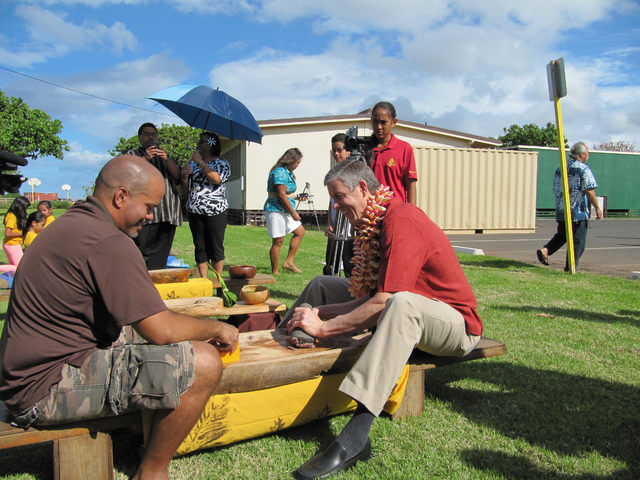By JENNIFER
SINCO KELLEHER ADVERTISING By JENNIFER
SINCO KELLEHER Associated Press HONOLULU (AP) — The U.S. Department of Education is giving Hawaii a flawless progress report on reforms that replaced provisions of the federal No Child Left Behind law. The
By JENNIFER
SINCO KELLEHER
Associated Press
HONOLULU (AP) — The U.S. Department of Education is giving Hawaii a flawless progress report on reforms that replaced provisions of the federal No Child Left Behind law.
The report, obtained by The Associated Press, shows that Hawaii received the highest mark of “meeting expectations” for all categories of monitoring. Only a handful of states achieved such high scores, the department said.
“The progress that Hawaii has made in its educational transformation is incredible,” U.S. Secretary of Education Arne Duncan said in a statement Friday. “From instituting afterschool and summer enrichment programs at the state’s lowest performing schools to providing direct support to teachers and schools as they transition to the state’s new, higher academic standards, educator evaluation system and other reform efforts, Hawaii is a model for the rest of the country.”
Most states were granted a federal waiver that allows them to try new ways to measure student progress after the Bush-era No Child Left Behind law drew criticism that it is a one-size-fits-all approach to defining student success. Last year, Washington became the first state to lose its waiver from some of the strictest requirements of that law, because lawmakers refused to require school districts to use student test scores as part of evaluating teacher effectiveness.
Partly because of Hawaii’s stumbles making progress on reforms under a $75 million “Race to the Top” grant, Hawaii initially received only a one-year waiver approval for the 2013-14 school year. The waiver was later extended for the following school year. The Race to the Top grant thrust Hawaii schools into the national education spotlight when the Education Department put Hawaii’s grant on “high-risk” status for unsatisfactory progress. There was talk of withholding the money. Hawaii turned things around, winning praise from the department and becoming the only grant winner not to request more time to accomplish reform goals.
Hawaii created zones in remote, hard-to-staff, low-performing schools that serve the largest population of Native Hawaiian and poor students. In its waiver request, Hawaii promised to focus on college and career readiness, rewarding high-performing schools and customizing student support.
“There have been bumps in the road, and we’re still making adjustments based on ongoing feedback from teachers and principals,” Hawaii schools Superintendent Kathryn Matayoshi said in a statement. “However, this report validates our strategic direction and our momentum in keeping Hawaii public schools on an upward trajectory.”
It’s rare for a state to receive a clean waiver monitoring report, said Anne Hyslop, a senior policy analyst.
The vast majority of states were flagged for issues, like teacher evaluations, standards and assessments, she said.
The other states that received perfect monitoring reports along with Hawaii aren’t yet publicly available. “The ultimate test, though, will be whether these reforms lead to better student outcomes,” she said.



